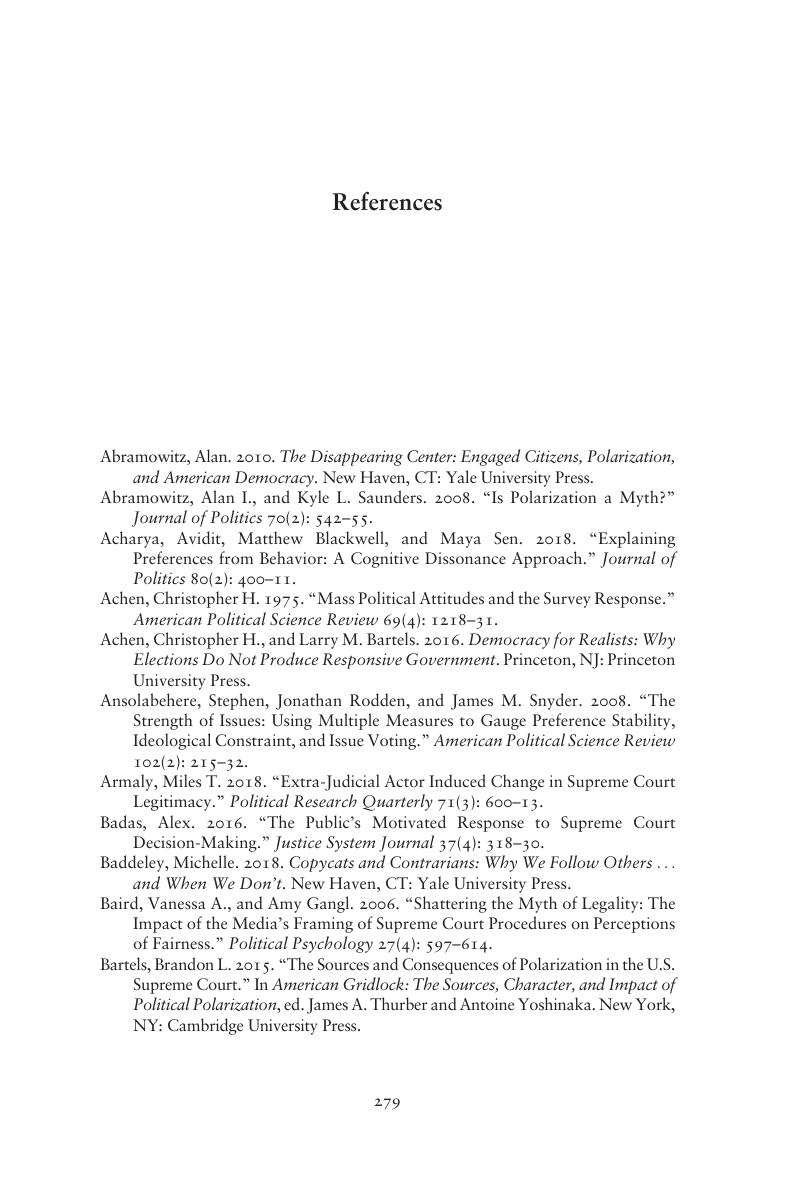Book contents
- Curbing the Court
- Curbing the Court
- Copyright page
- Dedication
- Contents
- Figures
- Tables
- Acknowledgments
- 1 The Guardians of Judicial Independence
- 2 Theories of Public Support for Court-Curbing
- 3 A Deep Dive into Supreme Court Evaluation and Support
- 4 General Policy Disagreement and Broadly Targeted Court-Curbing
- 5 Specific Policy Disagreement and Support for Court-Curbing
- 6 Partisan Polarization and Support for Court-Curbing
- 7 Procedural Perceptions and Motivated Reasoning
- 8 Reconsidering the Public Foundations of Judicial Independence
- References
- Index
- References
References
Published online by Cambridge University Press: 14 August 2020
- Curbing the Court
- Curbing the Court
- Copyright page
- Dedication
- Contents
- Figures
- Tables
- Acknowledgments
- 1 The Guardians of Judicial Independence
- 2 Theories of Public Support for Court-Curbing
- 3 A Deep Dive into Supreme Court Evaluation and Support
- 4 General Policy Disagreement and Broadly Targeted Court-Curbing
- 5 Specific Policy Disagreement and Support for Court-Curbing
- 6 Partisan Polarization and Support for Court-Curbing
- 7 Procedural Perceptions and Motivated Reasoning
- 8 Reconsidering the Public Foundations of Judicial Independence
- References
- Index
- References
Summary

- Type
- Chapter
- Information
- Curbing the CourtWhy the Public Constrains Judicial Independence, pp. 279 - 294Publisher: Cambridge University PressPrint publication year: 2020

